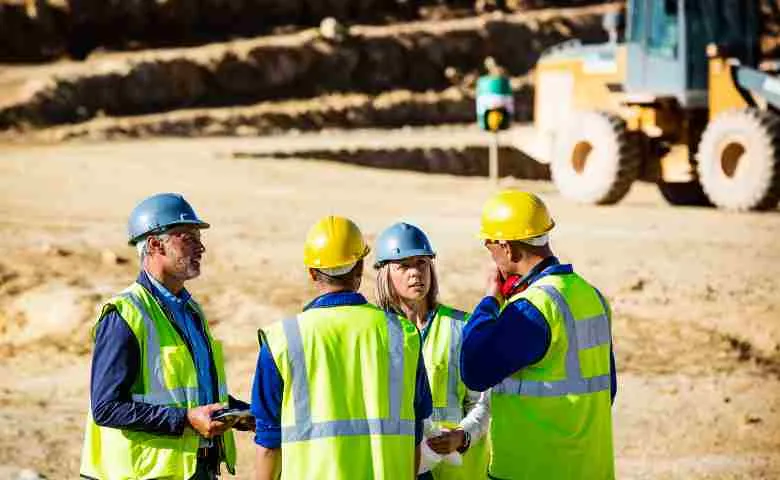Last Updated on July 10, 2023 by Admin
Relocating construction teams is an intricate task that requires meticulous preparation and implementation.
Whether the move is because you’re venturing into fresh markets or shifting operations to a different location, a seamless transition can assure limited interruptions and increase effectiveness.
This guide explores five invaluable tips and best practices that can help facilitate a successful transition for your construction teams. By applying these tactics, you can confidently and efficiently relocate your construction teams and set the stage for a prosperous construction venture.
1: Develop a Detailed Relocation Plan
The most basic thing you must do to ensure a smooth shift is to have a well-organized relocation strategy.
Practice 15+ AI-generated technical and HR interview questions for Civil, BIM, QS, Planning, HSE and Construction roles. Get instant feedback, improved answers, a 7-day improvement plan, and a full PDF report. Designed exclusively for construction professionals.
One free full interview session included. No credit card required.
Establish a detailed schedule with significant turning points like site selection, crew mobilization, and equipment transfer. Team members should have specific tasks and a timeline of what to expect when moving.
Because a detailed analysis of the project’s potential risks and difficulties can help you plan effectively, please identify any legal prerequisites or licenses required for the new location.
By developing a robust relocation plan, you can proactively address potential obstacles and ensure a smooth relocation experience for your construction teams.
2: Communicate Clearly and Consistently
Efficient communication is vital to a successful move because it ensures all the members of your construction teams remain updated and coordinated.
Set up an effective communication strategy that details platforms, timing, and the information-sharing pipeline. Consistently inform your construction crews about any move-related developments. Communicate important information pronto and resolve any doubts without delay.
Use a centralized communication solution, such as a productivity app or a designated email discussion, to enhance communication among team members. Use your centralized communication channel to ensure that all construction team members can view crucial files, the latest information, and connections through this tool.
Promote honest conversation by keeping an open mind and inviting input and inquiries from your construction teams. Open and honest communication builds trust and guarantees everyone comprehends their assigned tasks and duties.
3: Assess and Address Logistical Challenges
When relocating construction teams across borders, comprehensively analyze the new site’s infrastructure, accessibility, and potential limitations.
This analysis should include evaluating transportation logistics, such as routes, traffic congestion, parking facilities for construction vehicles, local permits, licenses, and regulatory requirements. Knowing all this is paramount to a smooth move.
Additionally, assessing the availability of utilities, waste management services, and storage options in the new location is vital for seamless operations. Developing a contingency plan to mitigate unexpected circumstances, such as adverse weather conditions or customs delays, is also crucial in international team transfers.
By proactively assessing and implementing plans to solve logistical challenges, your construction company can optimize its team-relocation process and minimize disruptions, ultimately ensuring a successful location process for construction teams.
4: Coordinate Equipment and Material Management
Take stock of all the construction equipment, tools, and materials needed for the construction project and ensure they are in good working condition. Develop a comprehensive inventory list and determine whether you will acquire or lease additional resources at the new construction site.
Coordinate with reputable transportation providers to secure the safe and timely transfer of equipment and materials. Consider any specialized handling requirements or permits for transporting oversized or hazardous items.
Also, establish an inventory tracking system and manage the construction material procurement process to avoid shortages or delays at the new site. Proper equipment and material coordination and management will help minimize disruptions and maximize operational efficiency.
5: Foster Team Cohesion and Morale
Relocating construction teams can be a challenging and stressful experience for your workforce.
To facilitate a smooth relocation process, prioritize team cohesion and morale. Organize team-building activities and social events before, during, and after relocation to promote camaraderie and a sense of teamness.
Encourage open communication channels where team members can express their concerns, ask questions, and receive support. Provide regular updates on the progress of the relocation and address any uncertainties or fears your team may have. Boost morale and maintain motivation by recognizing and appreciating the team’s effort during the transition.
By fostering a positive and supportive work environment, you can ensure your construction teams adapt quickly to the new location and remain engaged and productive.
Conclusion
Successfully relocating construction teams requires careful planning, effective communication, and a proactive approach to potential obstacles.
Remember that a well-executed relocation process minimizes downtime and positions your team for enhanced effectiveness at the new construction site.
Related Posts:
- Tips for Successful Job Relocation
- How to Keep Your Construction Business Running Smoothly
- Facility Management Career Paths: A Complete Guide for 2023
- A Crash Course on Steel Detailing Basics


